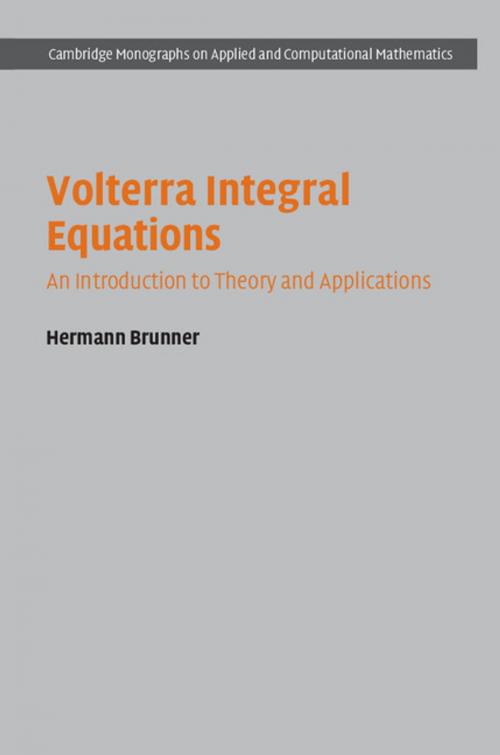Volterra Integral Equations
An Introduction to Theory and Applications
Nonfiction, Science & Nature, Mathematics, Calculus| Author: | Hermann Brunner | ISBN: | 9781316981542 |
| Publisher: | Cambridge University Press | Publication: | January 20, 2017 |
| Imprint: | Cambridge University Press | Language: | English |
| Author: | Hermann Brunner |
| ISBN: | 9781316981542 |
| Publisher: | Cambridge University Press |
| Publication: | January 20, 2017 |
| Imprint: | Cambridge University Press |
| Language: | English |
This book offers a comprehensive introduction to the theory of linear and nonlinear Volterra integral equations (VIEs), ranging from Volterra's fundamental contributions and the resulting classical theory to more recent developments that include Volterra functional integral equations with various kinds of delays, VIEs with highly oscillatory kernels, and VIEs with non-compact operators. It will act as a 'stepping stone' to the literature on the advanced theory of VIEs, bringing the reader to the current state of the art in the theory. Each chapter contains a large number of exercises, extending from routine problems illustrating or complementing the theory to challenging open research problems. The increasingly important role of VIEs in the mathematical modelling of phenomena where memory effects play a key role is illustrated with some 30 concrete examples, and the notes at the end of each chapter feature complementary references as a guide to further reading.
This book offers a comprehensive introduction to the theory of linear and nonlinear Volterra integral equations (VIEs), ranging from Volterra's fundamental contributions and the resulting classical theory to more recent developments that include Volterra functional integral equations with various kinds of delays, VIEs with highly oscillatory kernels, and VIEs with non-compact operators. It will act as a 'stepping stone' to the literature on the advanced theory of VIEs, bringing the reader to the current state of the art in the theory. Each chapter contains a large number of exercises, extending from routine problems illustrating or complementing the theory to challenging open research problems. The increasingly important role of VIEs in the mathematical modelling of phenomena where memory effects play a key role is illustrated with some 30 concrete examples, and the notes at the end of each chapter feature complementary references as a guide to further reading.















